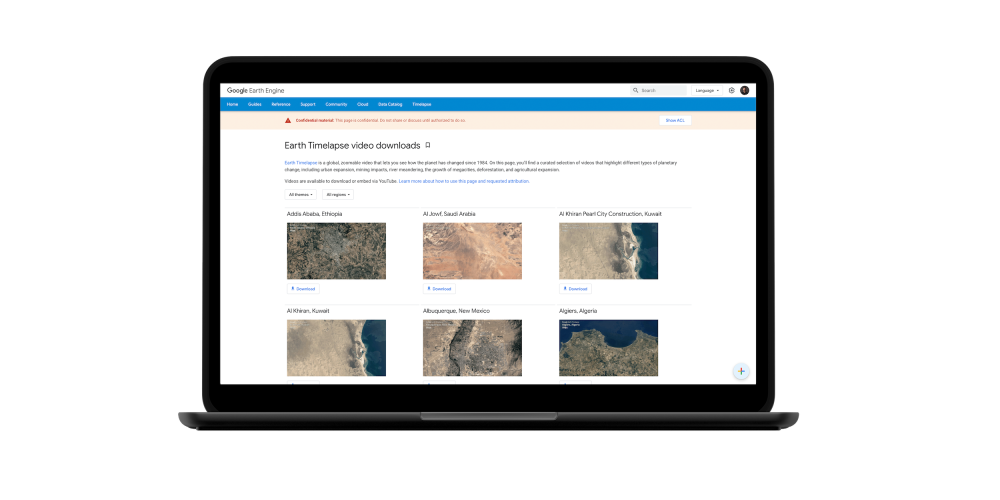
In 2016, Google introduced a Timelapse feature to track how any location on Earth has changed over the past few decades. Google Earth is now directly integrating Timelapse for an “interactive 4D experience.”
When looking at places in Google Earth, an accompanying panel features an adjustable timeline to browse satellite imagery from 1984 to 2020. The company has also created interactive tours using its Voyager storytelling platform centered around five themes: forest change, urban growth, warming temperatures, sources of energy, and our world’s fragile beauty.
Meanwhile, it’s making available 800 Timelapse videos in both 2D and 3D for public use:
You can select any video you want as a ready-to-use MP4 video or sit back and watch the videos on YouTube. From governments and researchers to publishers, teachers, and advocates, we’re excited to see how people will use Timelapse in Google Earth to shine a light on the issues facing our planet.

Behind-the-scenes, Earth Timelapse is based on 24 million satellite images and Google says it’s the “largest video on the planet, of our planet.” The company worked with the CREATE Lab at Carnegie Mellon University to create the technology powering Timelapse.
With mountains, valleys, buildings, and more, Timelapse videos are draped over our planet using advanced 3D graphics rendering techniques. At any given moment, the correct videos for your location, view angle and zoom-level are seamlessly stitched together on the fly to compose Timelapse in Google Earth, updated as you pan, zoom and explore.
Data is sourced from NASA and the United States Geological Survey’s Landsat program, as well as the European Union’s Sentinel satellites.
It took more than 2 million processing hours across thousands of machines in Google Cloud to compile 20 petabytes of satellite imagery into a single 4.4 terapixel-sized video mosaic — that’s the equivalent of 530,000 videos in 4K resolution!


Processing involved identifying and removing artifacts, like clouds. Google then computed a single representative pixel for every location on the planet for the past 36 years. Timelapse imagery will be updated annually through the next decade.
Google Earth Timelapse is available now on Android, iOS, and the web.
Author: Abner Li
Source: 9TO5Google



